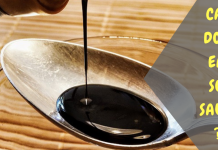Choosing the right puppy food is a crucial step in nurturing your new furry family member. As a devoted pet parent, you want to ensure your puppy grows into a healthy and happy adult dog, and that journey begins with their diet. With so many options on the market, selecting the best food can feel overwhelming. But don’t worry—you’re not alone in this! In this article, we’ll guide you through the essential factors to consider when choosing the perfect puppy food, helping you make informed decisions that will support your puppy’s development and well-being. Whether you’re a first-time pet owner or a seasoned dog lover, our warm and instructive approach will make this process both easy and enjoyable. Let’s embark on this exciting journey together, ensuring your puppy gets the best start in life!
Understanding Your Puppys Nutritional Needs
As a loving puppy parent, ensuring your furry friend gets the right nutrition is essential for their growth and well-being. Puppies have different dietary requirements compared to adult dogs, and it’s crucial to understand these needs to make informed decisions. Here’s what to consider:
- Age and Size: Puppies require food that supports their rapid growth and development. Consider their breed size—small, medium, or large—as this influences the type of nutrients they need.
- Balanced Nutrition: Look for puppy food with a good balance of proteins, fats, and carbohydrates. High-quality proteins from sources like chicken, fish, or lamb are vital for muscle development.
- Essential Nutrients: Ensure the food contains calcium and phosphorus for healthy bones and teeth, and DHA for brain development.
- Digestibility: Puppies have sensitive stomachs, so opt for easily digestible ingredients. Foods with prebiotics and probiotics can support their digestive health.
Remember, each puppy is unique, so it’s always a good idea to consult with your veterinarian to tailor their diet to their specific needs. This way, you’ll be setting the foundation for a long and healthy life for your pup.
Decoding Puppy Food Labels for Informed Choices
When it comes to selecting the ideal food for your puppy, understanding the labels on pet food packaging is essential. Not all puppy foods are created equal, and knowing how to decode these labels can help you make the best choice for your furry friend. Here are some key elements to look for:
- Ingredients List: Ingredients are listed by weight, so look for high-quality proteins like chicken or lamb as the first ingredient. Avoid foods with vague terms like ”meat by-products” or ”animal digest.”
- Nutritional Adequacy Statement: Check for a statement from the Association of American Feed Control Officials (AAFCO) that ensures the food meets established nutritional standards.
- Guaranteed Analysis: This section provides information on the minimum percentages of crude protein and fat, and the maximum percentages of fiber and moisture. Ensure these align with your puppy’s nutritional needs.
- Feeding Guidelines: Follow the recommended feeding instructions but remember to adjust based on your puppy’s activity level and growth stage.
By paying attention to these details, you’ll be better equipped to choose a nourishing and balanced diet that supports your puppy’s health and development. Remember, your vet can also provide personalized advice tailored to your puppy’s specific needs.

Expert Tips for Selecting the Perfect Puppy Food
Choosing the right food for your puppy is crucial for their growth and development. Here are some expert tips to guide you through the selection process:
- Check the Ingredients: Look for foods that list a high-quality source of protein as the first ingredient. Avoid foods with excessive fillers like corn or soy.
- Understand Your Puppy’s Needs: Different breeds and sizes have different nutritional requirements. Consult with your veterinarian to ensure you’re meeting those specific needs.
- Look for AAFCO Approval: Ensure the puppy food has a statement from the Association of American Feed Control Officials (AAFCO) indicating it meets nutritional standards.
- Consider Your Puppy’s Age: Puppies have different dietary needs at various growth stages. Choose food that is appropriate for your puppy’s age.
- Monitor Your Puppy’s Reaction: After introducing a new food, observe your puppy for any signs of allergies or digestive issues, and consult your vet if needed.
By following these tips, you’ll be well on your way to finding a nutritious and satisfying diet for your growing puppy.
















